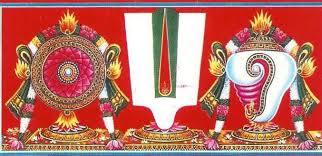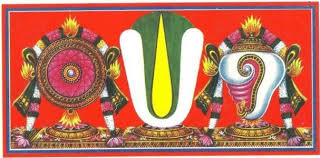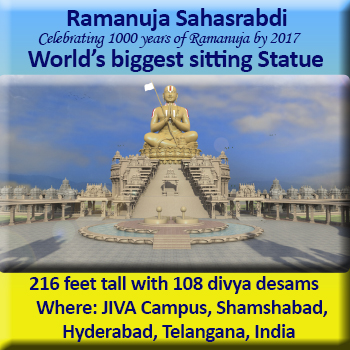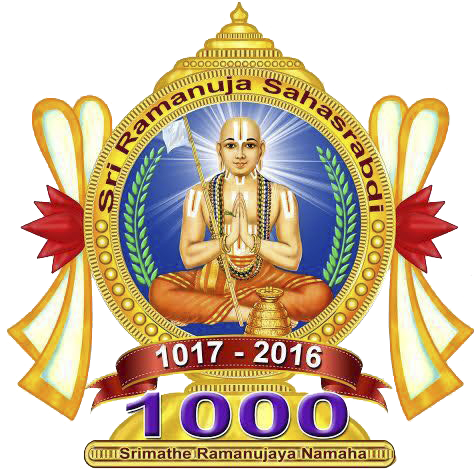Literally the word means a religious mark (Pundra) which is worn upright (oordhawa). In common parlance it is called Namam. The Indian tradition has always insisted upon its followers to wear namam appropriate to their faith on their bodies especially on their forehead. One such namam is Oordhwapundra. Its significance is that it dispels the darkness of ignorance and reduces sins to ashes. It has been ordained by the Vaishnava scriptures that while taking namam on various parts of the body (Twelve places) with the Oordhwapundra, the names of Lord Sri Maha Vishnu are to be repeated and that the respective mark represents the respective aspect of the deity indicated by that particular name. The word Namam has been synonymous with the Oordhwapundra and is invariably associated with the Sankha or Conch on the left side and the Chakra or discus on the right side. This forms the chief symbols of the followers of Sri Ramanuja, who are known as Sri Vaishnavites. The Oordhwapundra when decorated on the forehead of the deity in a temple signifies the power of the deity to uplift the devotees. When taken on the forehead of the devotee it may remind him of the need to take a spiritual upward path.
Urdhva pundram (an authorized symbol applied by mixing the clay that is found in holy pilgrimages and that represents the holy feet of Sriman Narayana) – while it talks about forehead specifically, our purvaacharyas always applied 12 urdhva pundrams at various places of the body per sastras, that vaishnava quickly purifies the world (the place where he is present).
Our purvaacharyas have always emphasised the importance of physical appearance and always ensured that they maintained their physical appearance according to the sastraas even at dire situations. After all we are also driven by our senses – so the easiest way we can identify a vaishnava is thru the sense of vision. Only advanced vaishnavas can identify another vaishnava (who may not be physically appearing so). That is why this pramaanam from padma puranam puts emphasis in physical appearance. With this beginning we will go thru pramaanams from various granthangal of our purvaacharya.
The white colour denotes Satwa and Lord Vishnu represents satwa (peace) – personified. The Srichurnam is used to mark the central vertical line which represents Goddess Lakshmi, the reservoir of compassion. By wearing the Namam, that is the Lord’s feet on the forehead, one holds to God’s feet when his heart will be moved and he is sure to confer his grace.

It is sometimes interpreted that the two lines on the outside represent Ida and Pingala (the two passages for the flow of Pranic energy, interwinding the back bone) and the middle line (marked in red or Yellow colour) represents the Sushumna passage (through which the kundalani power flows after awakening). The three together represent the yogic path of spiritual ascent. Clay or white earth is used for marking the outer vertical stripes which represent Lord Vishnu’s feet.
Acharya Divya Tiruvadigale Saranam



